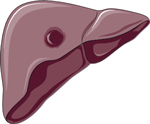May 15, 2018, Dr Chee L Khoo

Kylie was known to have chronic hepatitis c infection for many years. She had been busy for the last 2-3 years being pregnant. We talked about anti-viral treatment as soon as she finished with breast feeding her last baby. She had heard about these wonder drugs curing her hepatitis C infection.
When Kylie was ready, we went through the motions:
Pre-treatment Asssessment – the 6 Cs
- Complications of liver disease
- Co-factors for liver disease progression
- Signs of liver disease
- Presence of cirrhosis -consider Fibroscan for any patient with hepatitis C.
We are fortunate that Medical Imaging Campbelltown will bulk bill patients for Fibroscan. Alternatively, book through the Liver Clinics at your local hospital.
- Co‑morbidities
- Body weight and BMI (consider risk of fatty liver and dosing for ribavirin
- Cardiovascular risk
- General bloods including lipids
- Consider arranging an ECG if patient aged >50 and/or has cardiac risk factors especially if ribavirin containing treatment is considered
- Conflicting priorities
Consider treatment for any adult with chronic HCV infection unless life expectancy is < 12 months due to unrelated comorbidities.
- Compliance:
- Physical and psychological barriers to adherence.
- Ongoing risk factors for viral transmission and reinfection – mainly people who inject drugs
- Social or cultural issues that may affect medication adherence.
- Concomitant medications:
- Assess potential drug to drug interactions between HCV DAAs and concomitant medications, including over-the-counter, herbal, supplements, and recreational drugs.
- See Hep Drug Interactions (University of Liverpool) – Drug Interaction Charts.
- Contraception:
- Discuss current or planned pregnancies, including for male patients, and contraception use.
- Contraception is needed during treatment, especially for ribavirin which is teratogenic.
- Pregnancy test for all women of childbearing age.
We discussed contact tracing, contraception, breastfeeding, alcohol and other drug use and other STIs. Kylie contracted her Hep C during a blood transfusion a long time ago. Apart from breast feeding and contraception, the rest was easy. She was never treated before for Hepatitis C. There were no abnormal LFTs, no other STIs and she had low to medium level viral load of genotype 1, which is the most common. Because of her long duration of infection and despite having normal LFTs, we went for a Fibroscan at Medical Imaging Campbelltown. Fortunately, it did not reveal any cirrhosis and her liver elasticity was within normal limits.
There are 6 regimens to choose from. We decided to go for Sofosbuvir plus Ledipasvir (Harvoni®) just because I attended a lecture by one of our local gastroenterologist and that name stuck in my head. Just fire up your medical prescription software and off you go. It’s all on Streamline Authority. Because her viral load was just above 6 X 10^6 IU/ml, we went for a 12 week course.
Monitoring treatment
- Before starting treatment – recent FBC, EUC, LFTs, INR, and HCV viral load (as per Assessment).
- Week 2 – phone check in with patient.
- Week 4 – FBC, LFTs, EUC, HCV viral load.
- Week 12 – FBC, LFTs, HCV PCR.
Kylie went through the 12 week treatment and her last lot of bloods came back negative for HCV. She is cleared of the virus although that does not constitute immunity. HCV can be reacquired.
Kylie was straight forward and as GPs, we are quite capable of managing that in our rooms. For more complicated cases and if you need some hand holding you can email a project echo referral form to gastroliver.liverpool@sswahs.nsw.gov.au, or phone 0408‑968‑191.
All the above information is available on the healthpathways site. In fact, much of what I have written is a cut and paste from the site. I paste the monitoring steps onto the clinical notes for easy reference and print them out for the Kylie so that she knows when the next step is. Simple.
